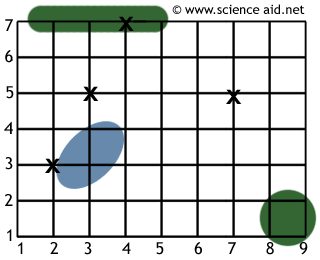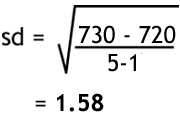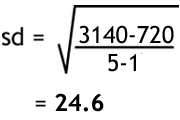Studying Ecosystems
Ecological Experiments
Investigations in to ecosystems are very complicated since there are so many different factors that need to be considered. Biotic factors are living factors affecting an organism, such as food, competition or disease.
Abiotic factors are non-living factors, some of these, how they can be recorded and their importance are outlined in the table below.
| Factor | Instrument | Effect / Importance |
|---|---|---|
| Temperature | Thermometer or probe. | Enzyme activity is heavily affected by heat, and therefore metabolism. The solubility of oxygen in water is also dependent on temperature. Increasing temperature reduces the solubility of oxygen. |
| Light | Light meter (electronic) | This influences the productivity of producers and therefore the availability of energy in the entire ecosystem. |
| pH | pH meter (electronic) or chemical test | The pH measures how acidic or alkaline a solution is. The pH of water is particularly important for aquatic organisms. Low pH (acidic), interfers with ion regulation and reduces efficiency of haemoglobin. It is also important in soil as different plants prefer different pH. |
Sampling Techniques
It is not possible to survey an entire area, so small areas called samples are taken, there are two methods used.
Quadrat sampling takes small areas, randomly chosen from an ecosystem, these areas are bounded by a metal frame called a quadrat. Where to place the quandrat is usually decided by dividing an area in a grid, and then randomly selecting co-ordinates (throwing isn't scientific enough!).

Quadrats are more useful for comparing species in two different areas, and for practical purposes are used in ecosystems without tall vegetation - such as meadows or shores.
A problem is when counting plants, but they grow in clumps; this is overcome by calculating the density or the percentage of ground covered.
A second method is transect sampling, this is used to measure the change from one area to another. It is carried out by laying a line along an area, and then recording species the line touches, or placing a quadrat at regular intervals.
A slightly different method is a belt transect, where two parallel lines are laid and the conditions between these measured.
Statistical Methods
Once you have performed an ecological investigation, you will have a lot of data and need to represent and interpret it somehow; to do this we use statistics.
One method of interpreting the mean that you may be familiar with, is the standard deviation. This is a measure of how spead out the data is. For instance, 10, 11 ,12, 13, 14 have a mean of 12, but 1, 1, 1, 1, 56 also have a mean of 12, this is where the standard deviation is useful.
The equation for standard deviation is:

So to calculate for 10, 11, 12, 13, 14, we square ach of these and add them together to find Σx2 = 730, mean=12, mean2 = 144 and nmean2 = 720. Therefore the standard deviation is...

Now compare this with the standard deviation for the second set of data.

If you notice a change in two conditions, is this merely down to chance, or something else? This is where statistical tests are used - they tell us whether a change is significant. One such test that is commonly used is the Chi squared test.
